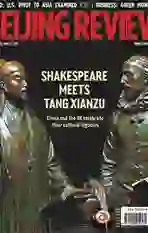Effective M&As to Improve Global Resource Allocation Power
2016-06-08

Chinese firms commonly purchased by multinationals a decade ago have now become important participants in global mergers and acquisitions (M&As).
The last three years have seen a remarkable acceleration toward this. There has been explosive growth in the number and value of crossborder M&As.
In 2013, Chinese investors made direct investments in 5,090 companies across 156 countries and regions. Direct investment in nonfinancial companies reached $90.17 billion, up 16.8 percent year-on-year and making China the third largest outbound investor in the world.
In 2014, China overtook Japan to become the globes second largest investor, investing$123.12 billion overseas and becoming a net capital exporter for the first time.
The number of big M&As from Chinese firms, such as ChemChina, China Investment Corp., Anbang and Fosun, increased rapidly in 2015. In that year, Chinese firms accounted for 6.2 percent of the worlds total cross-border M&As. This again accelerated in the first quarter of 2016, with overseas M&As totaling $16.56 billion.
Before 2013, state-owned enterprises were major participants in international M&As, and most purchase targets were in the resources sector. Since then, a far greater number of private Chinese companies, such as Wanda, Fosun and Anbang, have become involved, with most of the companies they bought being located in the United States and Europe.
Overseas M&As are a natural step for Chinese firms seeking more opportunities in the global market, as China shifts from trading and manufacturing to a greater capital focus. If companies in China, a super emerging economy with a GDP of over $10 trillion, focus solely on the domestic market, their opportunities for development will be limited.
In order to make cross-border M&As more effective and targeted, Chinese firms must comply with global financial trends and industrial changes, carry out investigations with due diligence and prudently analyze risks.
Chinese companies have now accumulated adequate capital and rich market experience, which are conducive for further participation in global capital and industrial chains. For instance, meat processing company Shuanghui and automaker Geely have both met their targets for cross-border M&As.
In September 2013, Shuanghui purchased Smithfield Foods, the biggest meat processing company in the United States, becoming the largest pork producer in the world, with more than 100 subsidiaries, 120,000 employees and production bases in Europe, America and Asia.
Seizing opportunities in changes to the automobile industry, Geely purchased Volvos car unit in March 2010 in a bid to enter the high-end market. The reorganization has not advanced smoothly, indicating the difficulties that private Chinese companies deal with to participate in the operation and management of high-end global value chains. However, Li Shufu, Chairman of Geely, is aware that the car industry is capital-, technology- and labor-intensive. In China, most leading automakers are joint ventures between domestic and foreign firms, in which the Chinese parties are restricted in technological innovation and nurturing their own brands. Therefore, it makes little sense for Chinese car manufacturers to follow the path of their Japanese and Korean counterparts by introducing foreign technology and establishing their own brands. Through overseas acquisitions, Geely can enter the high end of the industrial chain and improve its management and brand operations.
Some Chinese firms have failed in crossborder M&As because of lax due diligence, undervaluing potential risks or opaque market operations. One example is China National Offshore Oil Corp.s withdrawal of its Unocoal bid in 2005. Another example is Anbangs recent abandonment of its pursuit of Starwood, an American hotel company.
International M&As by Chinese firms are similar to those undertaken by Japanese companies three decades ago. As Japan transformed from a large manufacturing and trade power to a major capital nation, Japanese firms accelerated M&As in foreign markets, particularly in the United States, when the Japanese yen appreciated. However, due to inadequate research and erroneous judgments in designing and executing the national competition strategy, Japan believed it could make the yen the international currency and supersede the United States through increased acquisitions of overseas companies. But, after the countrys economic bubble burst in the early 1990s, many Japanese companies were forced to sell the U.S. businesses they had purchased at lower prices, and now, Japan still cannot rid itself of control from U.S. industrial and financial capital.
The mistakes made by Japanese companies in cross-border M&As must be avoided by Chinese firms as they rapidly expand their global resource allocation power.
